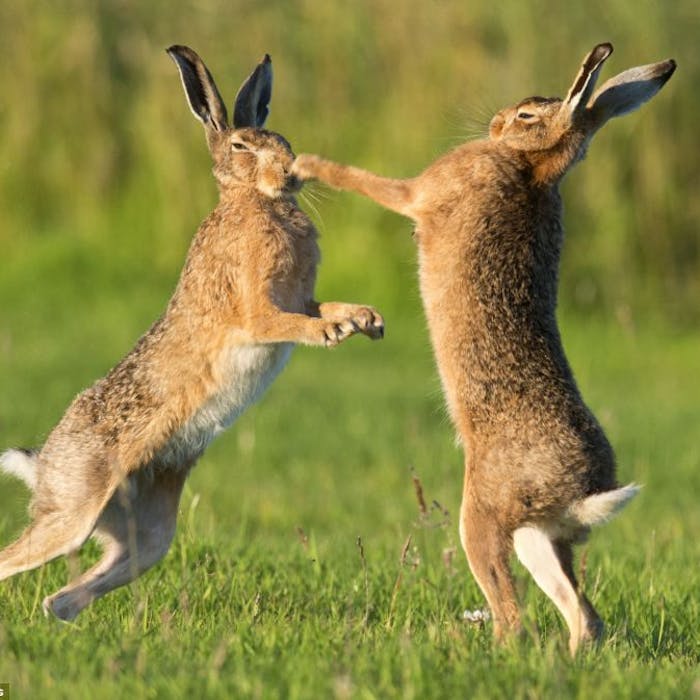
What's behind the story of the Mad March Hare?
The idea of the ‘Mad March Hare’, embraced in the story of Alice in Wonderland, seems to come from the behaviour of hares in spring. Their courting includes madcap chases and furious boxing matches.
The boxing was once thought to be between two males battling over a female, but it is now known to more likely be an unresponsive female fighting off a male’s advances.
March is the traditional month associated with this behaviour, but it can be seen anytime between December and April.
There are other elements of folklore related to the behaviour of the hare. They do not burrow underground like rabbits, instead they crouch in ‘scrapes’ which are small dips in the earth. This gives those watching the optical illusion of the hares disappearing whilst they run when, in fact, they just dip down into a scrape. Ground-nesting birds, such as lapwings, common before intensive farming techniques, also used the scrapes, and so a hare could be seen to disappear and then anyone coming up to the spot might find the egg of a ground-nesting bird and believe it to have been actually left by the hare.
Traditionally hares were also associated with witches, possibly because of this ability to seemingly ‘vanish’, and their ‘mad March boxing’ antics, which appeared to onlookers to be like a witch’s dance. Due to the conflation of these behaviours, witches were thought to be able to transform into hares to flee from impending trouble.
Further reading
Links to external websites are not maintained by Bite Sized Britain. They are provided to give users access to additional information. Bite Sized Britain is not responsible for the content of these external websites.
